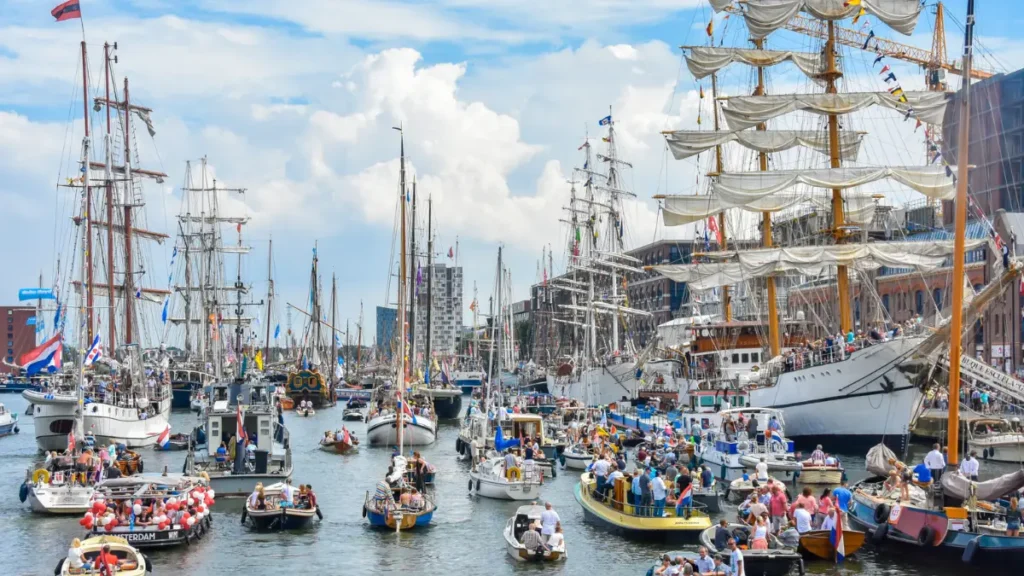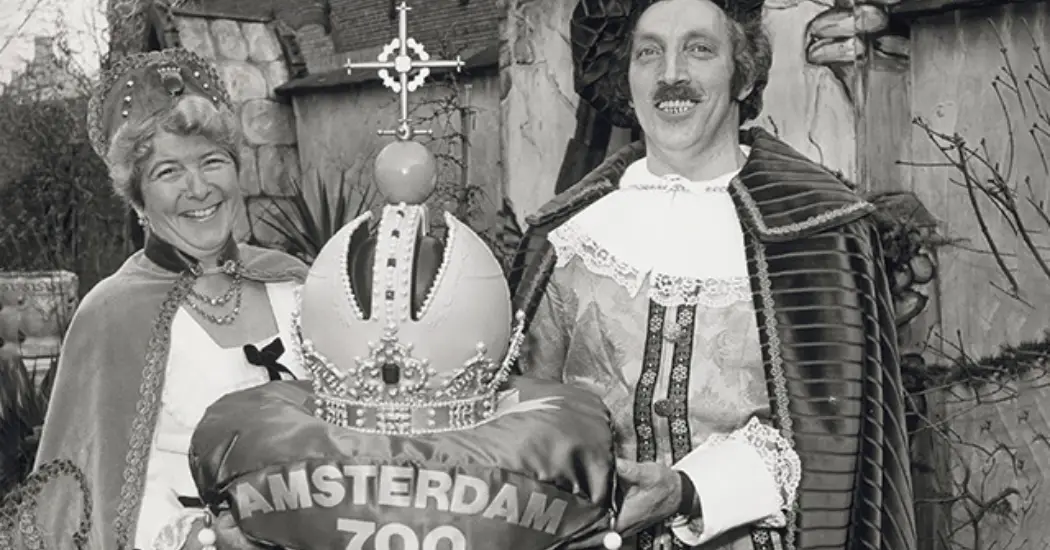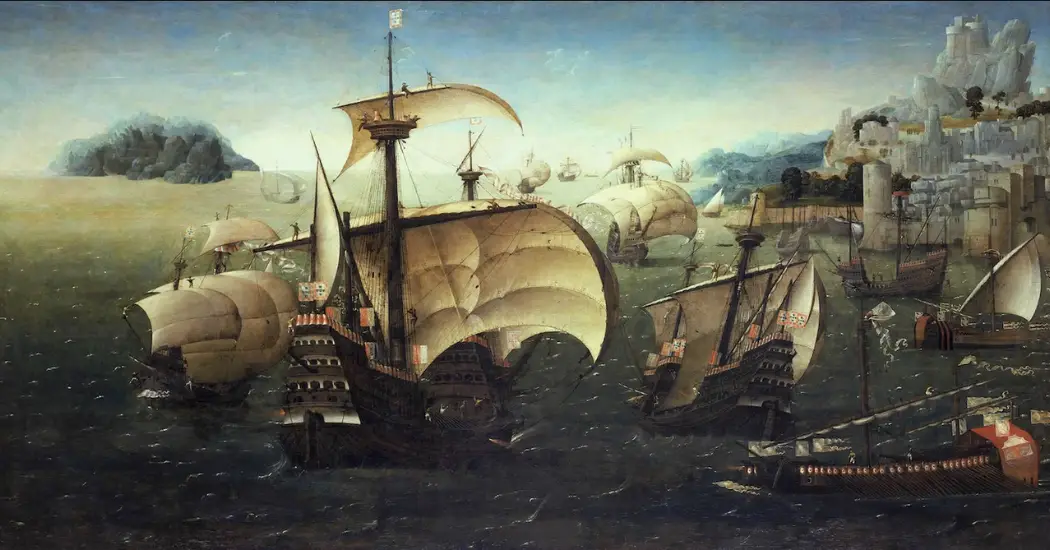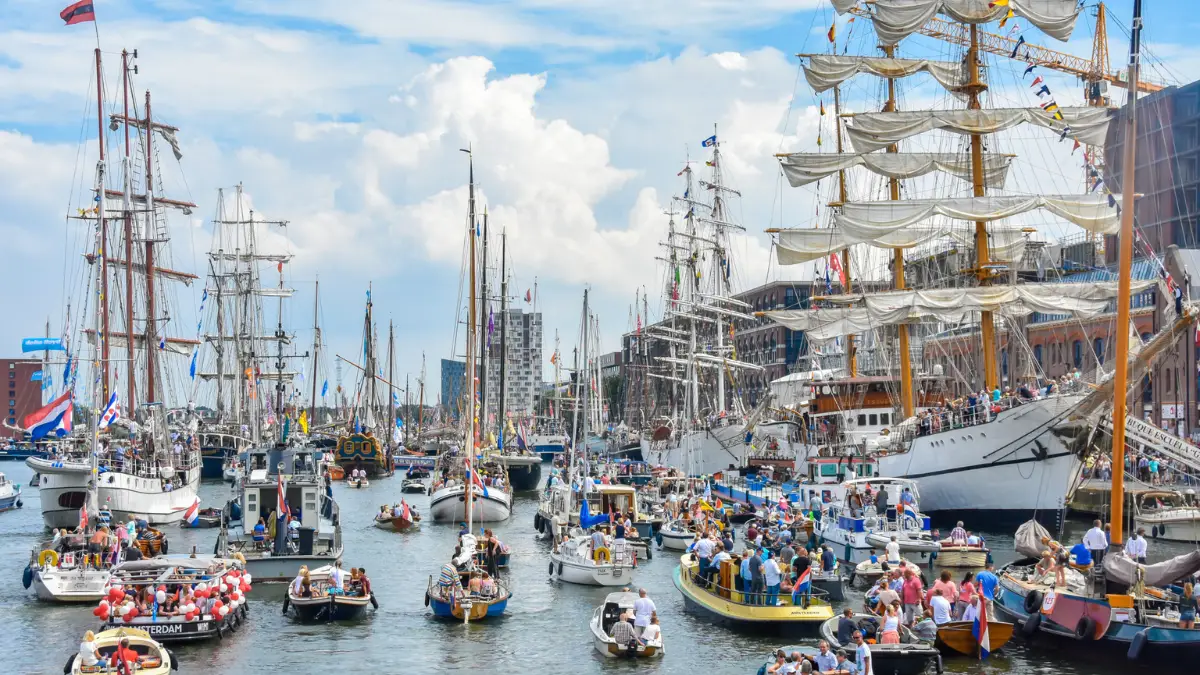History & Culture of Sail Amsterdam
Story of the world’s greatest maritime festival

Every five years, the city of Amsterdam transforms into a floating museum called Sail Amsterdam.
From ship parades to cultural showcases and street festivities, the 5-day event offers a dynamic and uplifting experience for all.
With millions of visitors pouring in from across the globe, the extravaganza is a must-see for maritime enthusiasts and curious tourists alike.
But to fully enjoy this nautical spectacle, understanding its rich roots and vibrant culture is essential.
Here’s everything you need to know about the history and culture of Sail Amsterdam to understand how grand this event is and why you must not miss it!
How it all began: A celebration turns into a tradition

The story of Sail Amsterdam started in 1975 as a tribute to Amsterdam’s 700th anniversary.
It wasn’t meant to become the global maritime festival it is today.
It was just a heartfelt celebration.
But when 18 magnificent training ships and over 500 smaller vessels sailed into the IJ, locals and tourists were mesmerized.
The tall ships against the backdrop of old Amsterdam looked like artwork, taking people back to the days of the Dutch Golden Age.
That first edition, dubbed “SAIL Amsterdam 700,” exceeded all expectations.
The turnout, enthusiasm, and sheer beauty of the ships made it clear that this couldn’t be a one-time show.
And so, every five years, Amsterdam welcomed the world back to its waters, each edition building on the last in scale, ambition, and cultural richness.
Sail through time: How the event grew into a global celebration
Let’s take a look at how Sail Amsterdam evolved over the decades:
| Edition | Year | Visitors | Weather (°C) |
| 1st | 1975 | 700,000 | 20 |
| 2nd | 1980 | 1,000,000 | 19 |
| 3rd | 1985 | 1.4 million | 19 |
| 4th | 1990 | 1.6 million | 26 |
| 5th | 1995 | 4.0 million | 26 |
| 6th | 2000 | 2.4 million | 22 |
| 7th | 2005 | 2.6 million | 24 |
| 8th | 2010 | 1.7 million | 24 |
| 9th | 2015 | 2.3 million | 25 |
Each edition brought with it something new.
In 1985, there were plans to build a Dutch windjammer and even a full VOC ship replica during the event.
By 1995, Sail had morphed into a grand maritime carnival, with dragon boats, steamships, and even wherries making appearances.
Amsterdam’s harbor became a temporary global stage where maritime history came to life.
Behind the scenes: The hands that make it happen
While the ships draw the crowds, thousands of volunteers work tirelessly behind the scenes. From guiding visitors to helping dock historic vessels, their passion keeps the event running smoothly. Some have returned every five years for decades, making it a personal tradition.
Find out where to catch the best views with the Sail Amsterdam 2025 route and location guide.
Deeply connected to the Dutch way of life

More than a festival of ships, Sail Amsterdam reflects how much the sea has shaped the Netherlands.
Water is not just part of the country’s geography; it’s part of its soul.
Centuries of exploration, trade, and shipbuilding have influenced everything from Dutch art to their world view.
- Golden Age roots: In the 1600s, Dutch ships traveled across the globe. This spirit of exploration is celebrated at Sail.
- Craftsmanship and design: The event puts a spotlight on the evolution of Dutch shipbuilding, from historic tjalks to modern engineering marvels.
- Open to all: Free access ensures people from all backgrounds can join in. That’s a reflection of Dutch cultural inclusiveness.
- Bringing nations together: Sail encourages global friendships. Every edition sees ships and crews from all over the world.
The Tall Ships: Living legends of the sea
The Tall Ships are the crown jewels of Sail Amsterdam.
Towering masts, hundreds of sails, and crews in uniform add a cinematic drama to the event.
Each ship tells its own story; some are replicas, others are still in active naval service, or used for training young sailors.
Notable ships through the years:

- Stad Amsterdam (Netherlands): A 3-masted clipper built in the 2000s, modeled after 19th-century ships. A symbol of Amsterdam’s modern maritime legacy.
- Dar Młodzieży (Poland): The “Gift of Youth,” designed in the early 1980s, proudly continues Poland’s seafaring tradition.
- Mir (Russia): Known not just for beauty but speed, a frequent regatta winner.
- Alexander von Humboldt II (Germany): Famous for its distinctive green sails, continuing Germany’s training traditions.
- La Grace (Czech Republic): A replica brig built with historic accuracy, serving as a floating classroom.
- ARC Gloria (Colombia): The elegant ambassador of the Colombian Navy, representing Latin America at Sail.
Many of these vessels are open to visitors, with some offering deck tours or performances onboard. But even just seeing them docked is like stepping into a living museum.
👉 See which iconic ships are sailing in this year’s lineup.
Faces of the fleet: Crew stories that travel oceans
Every ship brings not just sails and masts, but people with remarkable stories. Some crew members spend months at sea to reach Amsterdam. For them, Sail is more than a festival. It’s a reunion with fellow sailors from around the world.
Cultural happenings afloat and ashore
While ships are the stars, the supporting cast of cultural events is just as compelling.
Sail Amsterdam captures the Dutch flair for turning serious history into a fun, hands-on celebration:
- Concerts on water: The SAIL Music Marina has hosted everything from classical symphonies to rock bands, sometimes with ships as the stage.
- Street theatre and storytelling: Local performers bring tales of sea monsters, lost treasure, and heroic sailors to life.
- Multicultural showcases: Ships from over 20 countries host cultural exchanges, such as Colombian folk dances, Polish food tastings, or Russian naval displays.
- Pieremachochel Parade: A parade of creatively decorated boats and floating contraptions, bringing joy and satire in equal measure.
👉 Upgrade your view with a relaxing saloon boat cruise during the event.
The visual spectacle: Not just a view, a vibe
One of Sail’s most memorable features is its sheer scale.
When the Parade of Sail enters the harbor, it’s like time folding onto itself.
The canal bursts with masts, sails, and maritime flags fluttering in the wind. You don’t need to be a sailor to be awestruck.
Some parades have stretched over 12 kilometers long, involving over a thousand ships of various sizes.
Traditional tjalks and barges cruise beside ultra-modern vessels.
The blend of old and new, history and celebration, gives Sail a festival atmosphere that is unmatched.
👉 Plan smarter with these essential tips for Sail Amsterdam 2025.
Why does Sail Amsterdam 2025 matter more than ever?
Sail Amsterdam 2025 is the kind of event you build a trip around.
It only happens once every five years; this time, it’s even more special as it marks:
- 10 editions of Sail Amsterdam
- 50 years since the first event in 1975
- 750 years since the founding of the city itself
Over 10,000 ships are expected to fill the canals and harbors, from historical tall ships to modern naval vessels.
You can hop on themed cruises, explore ships docked in the harbor, and enjoy concerts, food markets, and fireworks, all while soaking in Amsterdam’s scenic beauty.
It’s the perfect way to explore the city from both land and water.
With this edition marking several major milestones, it will be the most exciting Sail yet. And since the next one won’t happen until 2030, now’s the time to go.
Image Courtesy: Canalsofamsterdam.com
